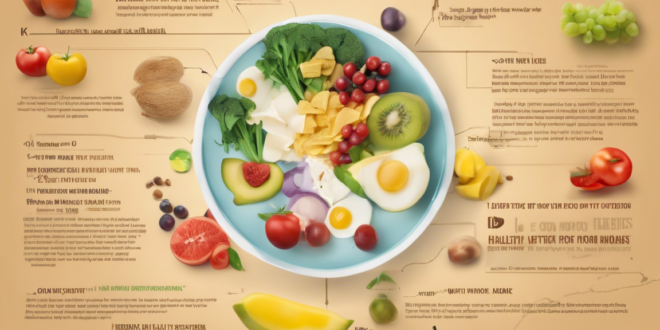The Amazing Benefits of a Fiber-Rich Diet: Your Comprehensive Guide to Superfoods and Optimal Nutrition
In today’s fast-paced world, maintaining a healthy diet can be challenging. One of the most powerful nutritional strategies for improving overall health is incorporating fiber-rich foods and nutrient-dense superfoods into your daily meals. This comprehensive guide will walk you through everything you need to know about creating a diet that supports your wellness goals, boosts energy, and promotes long-term health.
Understanding the Power of Fiber
Fiber is a crucial component of a healthy diet that often goes overlooked. Unlike other nutrients, fiber passes through the digestive system largely unchanged, providing a range of health benefits that can transform your overall well-being. There are two primary types of fiber: soluble and insoluble, each playing a unique role in maintaining optimal health.
Types of Fiber and Their Health Benefits
Soluble fiber dissolves in water and helps lower cholesterol levels, regulate blood sugar, and support digestive health. Found in foods like oats, beans, and fruits, this type of fiber creates a gel-like substance that slows digestion and helps you feel fuller for longer. Insoluble fiber, on the other hand, adds bulk to your diet and helps food move through your digestive system more efficiently, preventing constipation and supporting overall gut health.
Step-by-Step Guide to Incorporating Superfoods
1. Morning Nutrition Boost
Start your day with a powerful breakfast that incorporates high-fiber superfoods. Consider creating overnight oats with chia seeds, berries, and a sprinkle of nuts. Chia seeds are packed with fiber, protein, and omega-3 fatty acids, making them an excellent addition to your morning routine.
2. Smart Snacking Strategies
Replace processed snacks with fiber-rich alternatives. Keep a mix of almonds, pumpkin seeds, and dried fruits on hand. These nutrient-dense options provide sustained energy and support digestive health while keeping you satisfied between meals.
3. Lunch and Dinner Transformation
Incorporate whole grains like quinoa, brown rice, and barley into your main meals. These grains are not only high in fiber but also provide essential minerals and proteins. Add a variety of colorful vegetables to increase fiber intake and boost nutritional value.
Top Superfoods for Fiber and Nutrition
Some of the most powerful superfoods that can easily be integrated into your diet include:
• Lentils
• Chickpeas
• Avocados
• Berries
• Nuts and Seeds
• Leafy Green Vegetables
• Whole Grains
Practical Implementation Tips
Transitioning to a fiber-rich diet doesn’t happen overnight. Start by gradually increasing your fiber intake to avoid digestive discomfort. Aim to add 5-10 grams of fiber daily, and always accompany increased fiber consumption with plenty of water to support digestion.
Potential Health Benefits
A diet rich in fiber and superfoods can provide numerous health advantages, including:
• Improved digestive health
• Weight management support
• Reduced risk of chronic diseases
• Better blood sugar regulation
• Enhanced heart health
• Increased energy levels
• Improved immune function
Overcoming Common Challenges
Many people struggle to incorporate fiber-rich foods into their diet due to time constraints or lack of knowledge. Meal preparation and planning can help overcome these challenges. Consider batch cooking grains, preparing overnight oats, and keeping pre-cut vegetables on hand for quick and nutritious meals.
Understanding Potential Side Effects
While fiber is incredibly beneficial, sudden increased intake can cause temporary digestive issues like bloating or gas. To minimize these effects, increase fiber intake slowly and stay well-hydrated. If persistent discomfort occurs, consult a healthcare professional.
Conclusion: Your Path to Nutritional Wellness
Embracing a fiber-rich diet is more than a temporary nutritional trend—it’s a sustainable approach to long-term health. By thoughtfully incorporating superfoods and fiber-dense ingredients into your meals, you’re investing in your body’s overall well-being, energy levels, and disease prevention.
Final Recommendations
Start small, be consistent, and listen to your body. Every individual’s nutritional needs are unique, so pay attention to how different foods make you feel. Consider consulting a registered dietitian for personalized guidance tailored to your specific health goals.
 Good Calories Guide GoodCalories Guide focuses on nutrition, healthy eating, and overall wellness. The site offers practical insights into evidence-based dietary practices, including tips for specific lifestyles such as veganism, keto, and family-friendly meal planning. It also addresses unique nutritional needs for individuals with conditions like diabetes or food allergies, while providing quick and accessible recipes to make healthy living a sustainable and enjoyable choice.
Good Calories Guide GoodCalories Guide focuses on nutrition, healthy eating, and overall wellness. The site offers practical insights into evidence-based dietary practices, including tips for specific lifestyles such as veganism, keto, and family-friendly meal planning. It also addresses unique nutritional needs for individuals with conditions like diabetes or food allergies, while providing quick and accessible recipes to make healthy living a sustainable and enjoyable choice.


